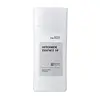What's inside
What's inside
 Key Ingredients
Key Ingredients

 Benefits
Benefits

 Concerns
Concerns

No concerns
 Ingredients Side-by-side
Ingredients Side-by-side

Water
Skin ConditioningButylene Glycol
HumectantGlycerin
HumectantPentylene Glycol
Skin ConditioningHydrogenated Lecithin
EmulsifyingPhytosterols
Skin ConditioningCeramide Ng
Skin ConditioningCeramide AP
Skin ConditioningCeramide Ag
HumectantCeramide NP
Skin ConditioningCeramide EOP
Skin ConditioningTaurine
BufferingLysine Hcl
Skin ConditioningAlanine
MaskingHistidine Hcl
Skin ConditioningArginine
MaskingSerine
MaskingProline
Skin ConditioningGlutamic Acid
HumectantThreonine
Valine
MaskingLeucine
Skin ConditioningGlycine
BufferingAllantoin
Skin ConditioningIsoleucine
Skin ConditioningPhenylalanine
MaskingSodium Acetylated Hyaluronate
HumectantSodium Hyaluronate
HumectantSodium Hyaluronate Crosspolymer-2
HumectantHydrolyzed Sodium Hyaluronate
Skin ConditioningMelaleuca Alternifolia Leaf Extract
PerfumingCentella Asiatica Extract
CleansingScutellaria Baicalensis Root Extract
AstringentPolygonum Cuspidatum Root Extract
AntioxidantGlycyrrhiza Glabra Root Extract
BleachingCamellia Sinensis Leaf Extract
AntimicrobialRosmarinus Officinalis Leaf Extract
AntimicrobialChamomilla Recutita Flower Extract
MaskingXanthan Gum
EmulsifyingEthylhexylglycerin
Skin Conditioning1,2-Hexanediol
Skin ConditioningPhenoxyethanol
PreservativeWater, Butylene Glycol, Glycerin, Pentylene Glycol, Hydrogenated Lecithin, Phytosterols, Ceramide Ng, Ceramide AP, Ceramide Ag, Ceramide NP, Ceramide EOP, Taurine, Lysine Hcl, Alanine, Histidine Hcl, Arginine, Serine, Proline, Glutamic Acid, Threonine, Valine, Leucine, Glycine, Allantoin, Isoleucine, Phenylalanine, Sodium Acetylated Hyaluronate, Sodium Hyaluronate, Sodium Hyaluronate Crosspolymer-2, Hydrolyzed Sodium Hyaluronate, Melaleuca Alternifolia Leaf Extract, Centella Asiatica Extract, Scutellaria Baicalensis Root Extract, Polygonum Cuspidatum Root Extract, Glycyrrhiza Glabra Root Extract, Camellia Sinensis Leaf Extract, Rosmarinus Officinalis Leaf Extract, Chamomilla Recutita Flower Extract, Xanthan Gum, Ethylhexylglycerin, 1,2-Hexanediol, Phenoxyethanol
Water
Skin ConditioningSerine
MaskingGlycerin
HumectantLactic Acid
BufferingGlycine
BufferingPCA
HumectantUrea
BufferingAcetyl Glucosamine
Skin ConditioningGlucose
HumectantHistidine
HumectantLysine Hcl
Skin ConditioningGlutamine
Skin ConditioningLeucine
Skin ConditioningTyrosine
MaskingArginine
MaskingAspartic Acid
MaskingPhenylalanine
MaskingSodium Chloride
MaskingPotassium PCA
HumectantCalcium PCA
HumectantMagnesium PCA
HumectantBiosaccharide Gum-1
HumectantMaltodextrin
AbsorbentHydroxyethylcellulose
Emulsion StabilisingSodium Nitrate
SoothingSodium Hydroxide
BufferingSodium Gluconate
Skin Conditioning1,2-Hexanediol
Skin ConditioningCaprylyl Glycol
EmollientPotassium Sorbate
PreservativeWater, Serine, Glycerin, Lactic Acid, Glycine, PCA, Urea, Acetyl Glucosamine, Glucose, Histidine, Lysine Hcl, Glutamine, Leucine, Tyrosine, Arginine, Aspartic Acid, Phenylalanine, Sodium Chloride, Potassium PCA, Calcium PCA, Magnesium PCA, Biosaccharide Gum-1, Maltodextrin, Hydroxyethylcellulose, Sodium Nitrate, Sodium Hydroxide, Sodium Gluconate, 1,2-Hexanediol, Caprylyl Glycol, Potassium Sorbate
 Reviews
Reviews

Ingredients Explained
These ingredients are found in both products.
Ingredients higher up in an ingredient list are typically present in a larger amount.
1,2-Hexanediol is a synthetic liquid and another multi-functional powerhouse.
It is a:
- Humectant, drawing moisture into the skin
- Emollient, helping to soften skin
- Solvent, dispersing and stabilizing formulas
- Preservative booster, enhancing the antimicrobial activity of other preservatives
Arginine is an amino acid that is important for human development. Your body uses is it to produce hair keratin and skin collagen.
As a cosmetic ingredient, Arginine has antioxidant properties and can also help repair damaged skin. This ingredient is derived either synthetically or from animals.
Arginine isn't fungal acne safe when used in the presence of other lipids (fats, fatty acids, oils, esters, etc). Oils and fats occur naturally within the skin, so take caution when using Arginine if you're prone to fungal acne.
Learn more about ArginineGlycerin is already naturally found in your skin. It helps moisturize and protect your skin.
A study from 2016 found glycerin to be more effective as a humectant than AHAs and hyaluronic acid.
As a humectant, it helps the skin stay hydrated by pulling moisture to your skin. The low molecular weight of glycerin allows it to pull moisture into the deeper layers of your skin.
Hydrated skin improves your skin barrier; Your skin barrier helps protect against irritants and bacteria.
Glycerin has also been found to have antimicrobial and antiviral properties. Due to these properties, glycerin is often used in wound and burn treatments.
In cosmetics, glycerin is usually derived from plants such as soybean or palm. However, it can also be sourced from animals, such as tallow or animal fat.
This ingredient is organic, colorless, odorless, and non-toxic.
Glycerin is the name for this ingredient in American English. British English uses Glycerol/Glycerine.
Learn more about GlycerinThis ingredient is an amino acid that helps build proteins and moisturizes skin. It is already present in our skin as our bodies produce them naturally.
Glycine already plays a role in helping keep our skin moisturized as amino acids transport moisture throughout our skin.
As collagen is made up of glycine and other amino acids, it is believed glycine may help our skin produce more collagen.
Learn more about GlycineWe don't have a description for Leucine yet.
Lysine HCl is an alpha amino acid salt.
Our skin uses amino acids as a precursor for building protein, and therefore keratins, collagen and elastin.
Phenylalanine is an amino acid. It is a skin soothing and hydrating ingredient. Amino acids play a crucial role in wound healing and skin hydration.
This ingredient is also used to help even out skin tone due to its ability to disrupt the melanin production process.
Two structures of phenylalanine exist: L-phenylalanine and D-phenylalanine. L-phenylalanine is essential, this means our bodies cannot produce it naturally and we must get it from foods. Our bodies convert D-phenylalanine to neurotransmitters, and D-phenylalanine is found in our bodies naturally.
Some foods that contain L-phenylalanine include eggs, soybeans, beef, milk.
Learn more about PhenylalanineSerine is an amino acid naturally found in our body. Our bodies use amino acids to create protein.
Amino-acids help give keep our skin hydrated. They play an important role in the skin barrier, which keeps the skin plump and firm.
Serine is a non-essential amino acid, meaning we don't need to obtain it from eating foods.
Learn more about SerineWater. It's the most common cosmetic ingredient of all. You'll usually see it at the top of ingredient lists, meaning that it makes up the largest part of the product.
So why is it so popular? Water most often acts as a solvent - this means that it helps dissolve other ingredients into the formulation.
You'll also recognize water as that liquid we all need to stay alive. If you see this, drink a glass of water. Stay hydrated!
Learn more about Water